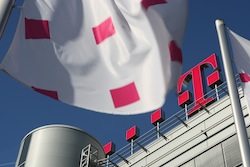Deutsche Telekom has launched a range of end-to-end Internet of Things bundles for enterprise customers aimed at making the space more accessible.
The bundles include hardware, cloud storage and a web portal. Connectivity is also included although Deutsche Telekom did not specify which kind. The German operator is an enthusiastic proponent of NB-IoT with a variety of deployments spanning bridges, wine and machinery across its Group footprint.
The operator said enterprises would be given access to its Cloud of Things powered by Cumulocity platform, which would make it quicker and easier for them to set up new networks.
[Read more: Deutsche Telekom, SAP unleash the bees to track shipping containers]
Three end-to-end solutions have been debuted. Asset Tracking helps enterprises to follow assets and machines and alert a company if anything goes missing. Deutsche Telekom said the solution would help avoid delays of transported goods and also protect against the theft of tools, supplies, machinery and materials.
The solution comprises a tracker fitted with an optimised long-life battery, access to a web portal, connectivity and cloud storage. The operator added data integration and analysis could be carried out by downstream systems from the likes of SAP and the solution can be tweaked according to individual enterprise needs.
Industrial Machine Monitoring can deliver real-time information about the status of hardware. Anything that uses communication protocols such as Modbus RTU can be integrated into the DT system. The operator added the solution’s predictive maintenance would help industrial players to cut costs, increase hardware availability and improve the quality of output.
[Read more: Operators look to potential of Industrial IoT to produce new revenue streams]
Finally, the IoT Service Button helps enterprises to retrofit equipment at the likes of workshops, construction sites or hospitals to order spare parts, request a pickup for full containers or report malfunctions.
The operator said this solution does not require integration into power supply or a company’s own networks.
A discussion at Mobile Europe and European Communications’ recent IoT in Telecoms conference saw a TIM executive argue that operators should be going as widely as possible in their IoT offering, rather than diving deep into a vertical.



